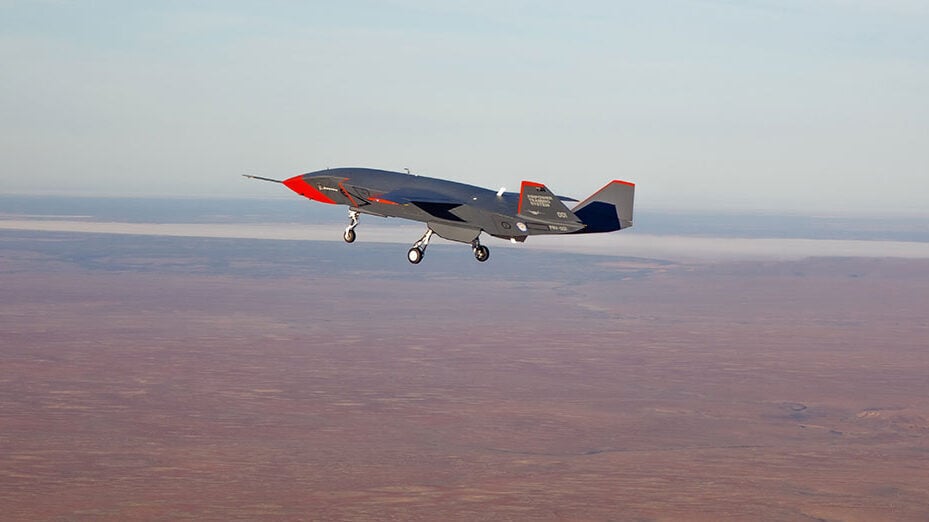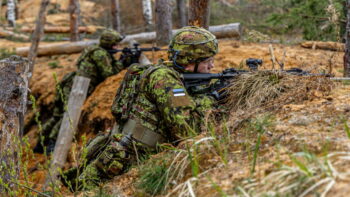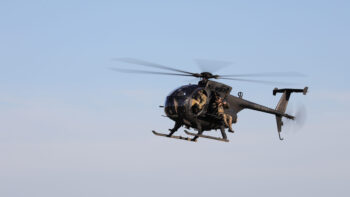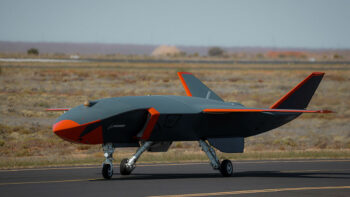
An MQ-28 Ghost Bat drone flies in tests for the Royal Australian Air Force. (Australian Department of Defence)
SEA AIR SPACE 2024 — The Navy is in the nascent stages of evaluating how to bring autonomous combat drones to the decks of aircraft carriers, but the service’s top official for unmanned programs says one thing is certain: The drones will have to be cheap, topping out at about $15 million per unit.
To keep prices low, the Navy will likely sacrifice the longevity of each so-called Collaborative Combat Aircraft, said Rear Adm. Stephen Tedford, the Navy’s program executive for unmanned systems and weapons. Instead of being sustained over a 40-year lifecycle, a single drone could be catapulted and recovered off the deck of an aircraft carrier a handful of times for surveillance and strike missions before ending its service life as a kamikaze drone.
“I want something that’s going to fly for a couple hundred hours. The last hour it’s either a target or a weapon. I’m either going to hit something with it or I’m going to train [a sensor on it] and shoot it down,” he said today during a briefing at the Sea Air Space conference. “But I’m not going to sustain them for 30 years.”
In contrast to the Air Force, which has made its CCA a major technology development priority, the Navy has said relatively little about its vision for how combat drones could be incorporated with its fighter fleet since the cancelation of the Unmanned Carrier Launched Airborne Surveillance and Strike program in 2016.
That could change shortly, with Tedford stating that the service is “in the process” of kicking off analysis for a CCA program. The initial focus will be studying the payloads, sensors and mission systems that will be needed on drones to augment the capabilities of existing fighters like the F/A-18E/F Super Hornet and F-35 Joint Strike Fighter, with the fielding of uncrewed aircraft targeted for “the second half of this decade,” he said.
Tedford gave few details about the scope or shape of a future CCA buy for the Navy, including when the service would formally launch a program. He did, however, say that the Navy is closely following the Royal Australian Air Force’s MQ-28 Ghost Bat program as well as US Air Force developments in artificial intelligence.
One critical point is that future platforms will need to be open and easily modified, Tedford said.
“I am not interested in pursuing a proprietary solution that will only talk to one specific proprietary property,” he said.
Five companies — Boeing, General Atomics, Lockheed Martin, Northrop Grumman and Anduril — are currently in the running in the Air Force’s effort to field collaborative combat aircraft, Breaking Defense previously reported. Air Force Secretary Frank Kendall said in February it plans to eliminate several vendors “within just the next few months.”
For the Navy, the MQ-25 tanker drone under development by Boeing remains the service’s major unmanned aviation priority. The MQ-25 is on schedule for its first flight next year, with initial operational capability set for 2026, Tedford said.























